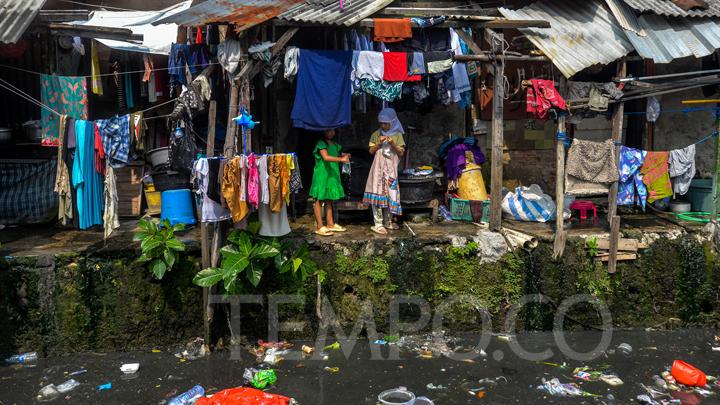By Ratmo (A Lecturer at UNPAM)
The recent decline in poverty rates, as indicated by the latest report from the Indonesian Central Statistics Agency (BPS), offers a glimmer of hope for economic recovery prospects. After skyrocketing to double digits in 2020 due to the pandemic, poverty levels have been successfully reduced to 9.71% as of September 2022. This development aligns with the positive economic growth trend observed since last year. While not yet reaching pre-pandemic levels (9.22% in September 2019), the decrease in poverty rates is at least one indication that the national economy is gradually improving.
There are at least three factors driving the reduction in poverty rates in 2023. Firstly, smoother mobility of people and goods compared to the early years of the pandemic. Secondly, relatively controlled prices of goods, especially essential food items, which play a significant role in the expenditure structure of the poor. Thirdly, the proliferation of various government social assistance programs provided to the poor during the pandemic, sourced from the National Economic Recovery Fund, despite shortcomings in management and distribution.
However, assessing the improvement in societal well-being based solely on aggregate poverty rates is insufficient. In fact, several serious issues persist. Firstly, the reduction of urban poverty has been relatively slow. From September 2020 to September 2021, the urban poverty rate only decreased by 0.32%. In contrast, rural poverty has decreased by 0.67%. Compared to pre-pandemic conditions in 2019, rural poverty rates are slightly better, indicating that income recovery driven by urban economic sectors such as manufacturing, trade, and services is still limited compared to the agricultural sector in rural areas, which has proven to be more resilient.
Secondly, although rural poverty rates have significantly decreased, the severity index has increased, indicating a widening gap among those below the poverty line. From 0.57 in September 2022, the severity index of rural poverty increased to 0.59% in September 2023. This suggests that there are still segments of poverty, especially extreme poverty, that have not been adequately addressed, either through government social assistance programs or through job creation in rural areas.
Thirdly, compared to different regions, poverty rates in several areas outside Java continue to rise. Of particular concern is poverty in Papua Province, which increased from 26.86% (March 2023) to 27.38% (September 2023), the highest in Indonesia and well above the national average. However, the economic growth of the province in eastern Indonesia during the first three quarters of 2023 was remarkably high, averaging 14%, far above the national economic growth. Considering the situation in Papua, the effectiveness of programs funded by the national budget for this province warrants scrutiny. Are these programs reaching the targeted groups? Or are they not addressing the specific needs of the poor in Papua?
Fourthly, although the number of people below the poverty line has decreased, those hovering around the poverty line are still numerous. Before the pandemic, the population categorized as near poor and vulnerable reached 67 million, almost three times the population below the poverty line. This needs to be monitored closely as this population segment remains vulnerable to falling below the poverty line if there are changes affecting their cost of living and income.
Given the complexity of poverty issues, extra efforts in poverty alleviation are imperative. Various shortcomings in the implementation of social assistance programs need to be continually addressed to ensure effectiveness and accuracy in targeting. Fundamental to poverty alleviation is the promotion of empowerment programs for the poor and vulnerable to reduce their dependency on external assistance. These empowerment programs vary widely, ranging from job creation to education and training, improving access to capital, markets, healthcare, electricity, clean water, and more.
For the extremely poor living in remote areas, facilitating and enhancing the mobility of people and goods is crucial. This can be achieved not only by building roads and ports but also by providing affordable transportation and logistics infrastructure. Subsidies related to the delivery of goods or transportation fuel, for example, should be considered.
Lastly, stabilizing food prices must remain a top priority given their significant contribution to the expenditure structure of the poor. However, these efforts should not come at the expense of farmers’ incomes. A competitive exchange rate at the farmer level will serve as an incentive for them to continue producing. As a result, food security, a crucial aspect of poverty alleviation, can be achieved.
In conclusion, while the decline in poverty rates indicates progress, the persistent challenges require sustained and targeted interventions. By addressing these challenges comprehensively and effectively, Indonesia can pave the way for a more inclusive and resilient economy, ensuring that the benefits of growth reach all segments of society.


